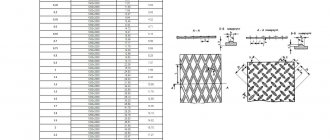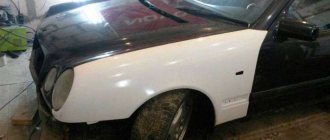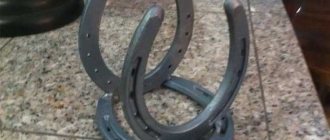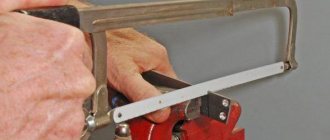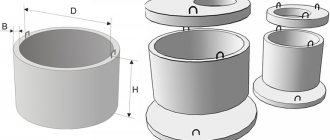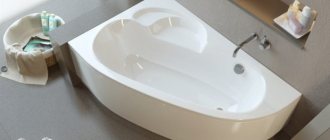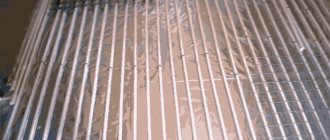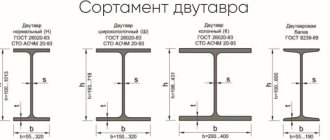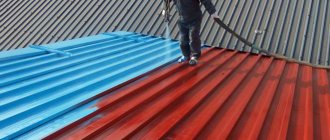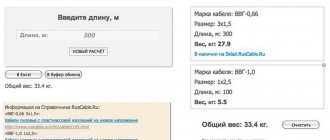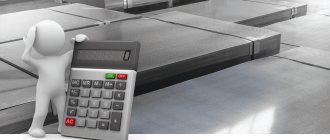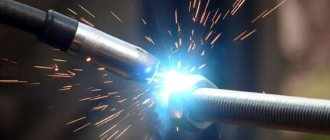What can the body tell about the car?
Body metal is quite an expensive part of any car. It is very important to monitor his condition carefully.
After all, this place of the car is exposed to undesirable weather conditions: strong sun, humidity and temperature fluctuations.
Often, the entire history of a given car can be traced by the condition of the body.
A professional auto mechanic will always be able to distinguish serious body damage from minor, cosmetic repairs. Based on the condition of the body, you can determine whether the car was involved in an accident and how serious the damage was.
And also how these damages were hidden. Body repairs have their own nuances that need to be taken into account when selecting a car.
Essence of the question
The same situation can happen when you start looking for an expensive model in the lower price range on the used market. A list of the best options for used cars under 400,000 rubles can help to some extent, but not in assessing the condition of the body and its coating.
A separate group of buyers can be identified as those who want a certain car due to some kind of attachment, for example, BMW. Here you will have to keep your eyes open, because crime, corrosion, and multiple repairs are possible. Examination of the paint layer can tell the future owner a lot:
- Was the car involved in the accident?
- What kind of damage did you receive in the accident?
- How were the body or coating defects eliminated?
- How much can you reduce the price of a car when bargaining?
The condition of the paintwork is almost perfect
A used car may not have excellent surface condition. There are always small scratches and chips: on the front part, grille, hood.
There are scratches from shoes on the sills. If you do not notice such flaws. And the coating looks like a new car, most likely, it was repainted.
The size of body gaps
There can be no factory-made uneven or asymmetrical gaps in the areas where the panels connect to each other. If you see anything like this. Most likely there was physical damage to the body, which was subsequently painted over. For the same reason, the doors in the car should not stick and have a clear opening order.
Fasteners, bolts and handles
During factory assembly, not all fasteners are painted along with the body. Some of them are installed on the car after finishing the painting work. It is worth carefully inspecting the car's handles; they are often ignored during repairs. Therefore, they can reveal what defects a particular car had.
What metal is suitable for repair?
To repair the hull, it is important to use those steels that were calculated and laid at the factory. The car body is a load-bearing element and is designed in such a way that:
- Withstand all loads during vehicle operation;
- In the event of an accident, deform in such a way as not to endanger passengers and the driver. For example, so that the hood does not move into the cabin, but is crushed, gradually reducing the impact force in a frontal collision.
It is better to buy ready-made body parts, or cut parts from similar decommissioned cars. The “pro” of using body iron is the fact that the metal already has a protective coating. And often it is of high quality, because it is applied at the factory. But finished parts are expensive, and a car body of a model similar to yours is rarely available for cutting for welding. What to do?
Determining the size of paintwork on a passenger vehicle
Different types of cars have more or less the same level of paintwork. Standards from the factory suggest a level of 100-140 microns.
However, during body modifications and further painting of the car, in some places there is a deviation of the cover from this norm.
Due to the increased presence of putty. In these places, the coating thickness can increase to 200 microns.
For body parts where it is difficult to determine this indicator with the eye, a special tool is used to identify this thickness - a thickness gauge.
If on one car you observe a spread of coating from 110 to 310 microns. Most likely, such a car was undergoing repairs and was repainted.
This device is present in all major auto repair shops. Therefore, if you need a detailed assessment of your car, you always have a chance to contact specialists in this profile.
The most expensive high-level thickness gauges can determine the thickness of paint on individual parts: aluminum or plastic.
Don’t forget that American cars usually have a thicker factory coating layer than Russian or Japanese ones.
The device determines the length of the interval from the sensor to the base of the car body. The closer the thickness gauge magnet is to the metal body, the greater the angle the needle moves.
To accurately determine the thickness of the paint layer, there is a special table of factory indicators. Which must be followed for an accurate conclusion.
Factory paint performance
Factory paint provides protection to the metal base of the body, as well as other layers that are applied to it - galvanization, primer. Only strict adherence to technology ensures the required durability of the body service. How much will the total thickness of the coating made at the factory be? For most cars, the indicator is in the range of 70-180 microns, while the spread across the car can be 20-25 microns, for one part - 10-15 microns. For the following elements, a layer thickness of 50-90 microns is allowed:
It is impossible to paint a car without this error, even at the factory. The paint and varnish product may be unevenly distributed in different areas: for example, in horizontal areas the layer will inevitably be thicker than in vertical ones. Also, during painting, shagreen appears - surface roughness. Painting indicators also differ for parts made of non-ferrous and ferrous metals. Thus, even on a new car, the readings may vary when measured by the device.
Body metal thickness by car brand
For accurate measurements, you need to attach the device to the car body. Smoothly move it along the surface, starting from the front edge. To ensure accurate results, measurements must be repeated 3-5 times.
Then calculate the average, taking into account all measurements. And then be sure to compare your measurement options with the indicators in the factory table.
Metal thickness on cars table
| Automobile | Model | Paintwork thickness (µm) |
| Audi | A1, A3, A4, A5, A7, A8 Q3, Q5, Q7 | 80-100 110-165 |
| BMW | 1-series, 2-series, 3-series, 5-series, 7 series X1, X3 X5, X6 | 100-165 90-110 120-165 |
| BYD | F3 | 75-100 |
| Cadillac | Escalade,CTS | 120-150 |
| Chery | Amulet, Tiggo | 100-120 |
| Citroen | C5, C-Elysse C4, C3, Picasso, Berlingo DS4 | 110-140 75-125 205-230 |
| Daewoo | Nexia, Matiz | 90-120 |
| Fiat | Albea, Punto | 100-140 |
| Ford | Focus Explorer, Kuga Mondeo | 150-165 135-145 115-130 |
| Hyindai | Accent, IX35, I30, I40, SantaFe, Elantra Tucson, Solaris, Sonata | 70-110 90-130 |
| Honda | Accord Civic Fit, CR-V | 130-150 100-135 80-100 |
| KIA | Sportage, Sorento, Cerato, Cee'd, Picanto Soul, Rio, Venga, Optima Quoris | 100-140 120-140 150-180 |
| Lexus | RX, ES, LX CT, GX, LS IS | 140-150 120-150 110-140 |
| Mazda | CX-7, CX-5 3.6 | 85-120 110-130 |
| Mercedes-Benz | C, E, S GL, ML | 165-180 90-140 |
| Mitsubishi | Lancer, Pajero L200, Outlander XL, ASX | 90-125 55-75 |
| Nissan | X-trail, Patrol, Juke, Qashqai, Murano, Tiida, Pathfinder lmera, Teana | 80-120 130-150 |
| Opel | Astra, Corsa, Mocca, Zafira, Insignia, Vectra | 110-160 |
| Peugeot | 208, 308, 508, 3008 4008 | 100-120 60-80 |
| Renault | Logan, Koleos Fluence, Duster, Megane, Sandero | 180-230 100-140 |
| Skoda | Octavia, Yeti, Superb, Fabia, Roomster | 100-140 |
| Subaru | Forester, Impreza, Outback, Lagacy, Tribeca | 100-140 |
| Suzuki | Grand Vitara SX4, Swift, Splash | 70-100 90-120 |
| Toyota | LC200, Camry, Highlander, Auris, Verso Avensis, Corolla, Prado, Prius, RAV4 | 110-130 80-110 |
| Volkswagen | Polo, Golf Tiguan, Passat, Caddy, Multivan, Amarok Touareg, Jetta | 80-110 110-140 140-180 |
| Lada, VAZ | Kalina, Priora Granta, Niva Largus | 60-100 110-140 180-230 |
How metal is made for cars
One of the large-scale manufacturers of metal for cars is the plant in Cherepovets. The plant has 4 blast furnaces. Including the largest oven in the world (over 100 meters high).
The cast iron is melted and taken to the steelmaking department, where it is put into molds and combined with additives and scrap metal. The composition of this metal mixture is clearly defined for each type of car. The resulting steel castings are cooled and rolled into rolls.
Next, the rolls are cut with gas cutters and thinned under special rolling to the size of automobile sheets. Then the sheets are rolled into rolls and sent to the galvanizing shop. Galvanization occurs at high temperatures.
This allows the zinc atoms to penetrate deeply into the leaf structure. The metal is then cut into sheets, secured into rolls and packaged for shipment to the customer.
Steel is the main material from which body parts are made. This increases body rigidity. And the weight of the car itself decreases. Also, body elements can be made of aluminum.
Which began to be used in recent years. With the same strength as steel, aluminum elements have less weight. Aluminum also makes it possible to produce parts of any shape.
Indicators of the Lada Kalina model
ATTENTION! A completely simple way to reduce fuel consumption has been found! Don't believe me? An auto mechanic with 15 years of experience also didn’t believe it until he tried it. And now he saves 35,000 rubles a year on gasoline! Read more"
Kalina's car frame is designed taking into account the most important safety regulations. Approximately twelve percent of the body elements on this domestic car are made of high-strength steel. More than half of the iron is coated with zinc. For comparison, for example, on the popular “ten” only 33 percent of the iron was galvanized.
Active and passive safety in case of an accident
Passive safety is characterized by its ability to reduce the severe consequences of an accident. It is achieved thanks to the strength of the body part, which affects deformation, safe windows and steering wheel.
Solid headrests and large door openings allowing escape in the event of an accident.
The structure of the body at the time of the accident must remain intact. The bumper is made of special materials that reduce injury to a pedestrian during an accident.
The active safety of a machine lies in its ability to prevent accidents. This is achieved by a large field of view to eliminate external interference. Formation of the desired microclimate inside the car, convenient arrangement of instruments and driver’s seating position.
Additional braking systems. Car stability and wheel locking on slippery roads are also included in the active safety package.
However, the thickness of the car body is not directly related to road safety, as many drivers may believe. The standard thickness provides a beautiful external texture of the machine.
But the safety of a car directly depends on the power structure of the body. Which is responsible for passive driving safety. This is achieved through high-strength steel, which increases body rigidity at low weight.
The thickness of the body metal is an important indicator. Which is easy to control using modern equipment - a thickness gauge. When buying a used car, you should pay close attention to this indicator.
This way you can avoid unwanted problems in the future if they were hidden from view by the previous owner. If you do not have this device, you can contact a service station for advice.
Source
Sheet metal for machine repair
An economical material for body repair is rolled sheet metal, which can be found at a metal depot or hardware store. The following steel grades are used for repairs: 08PS, 08KP, 10PS, 08YU, 01YUPD, 08GSYuF, 08GSYUT, 08YUP, 08YUPR, 08FKP, 09G2S. Among the listed grades, the most common sheet steel is 09G2S.
In various car models, identifying a specific grade of steel is not so easy. But there are general tips:
- The rolled products used must be cold rolled. Such rolled products are more homogeneous in structure, have higher parameters of strength, ductility and elasticity, and are free of scale.
- The metal must be soft to give it the desired shape.
red2309 › Blog › Paintwork thickness table.
If you decide to use a thickness gauge, then the question immediately arises: what should be the thickness of the car’s paintwork? For 99% of cars, the factory paintwork thickness is in the range of 80-170 microns. The table below shows the thickness of paint on different cars. There are a lot of tables on the Internet with the thickness of factory paint, all of these tables are approximately the same. Our table of factory paint thickness presents an extended list of car brands; this table is compiled taking into account information on the Internet and the vast experience of our employees, who have measured more than 20,000 cars over 9 years of work.
Comments on the paint thickness table: 1. Firstly, deviations from the figures indicated in the table are possible. If, for example, on an Audi A4 the thickness gauge shows the number 150 (and in the table 100-140), this does not mean that the part was made. There are a lot of factors on which the thickness of the paint of a particular car can depend: for example, the place of assembly, the year of manufacture, how often the car was washed, whether the owner was very diligent in removing snow with a brush in winter, etc. After checking the first 2-3 cars, you will already understand that the painted part is significantly different from the rest. As a rule, values over 190 microns are precisely made parts (with the exception of 1% of all cars whose factory thickness is slightly greater than generally accepted figures, see paragraph 2). If the reading is more than 300 microns, putty is present. 2. Many people ask how to understand that a paint thickness of 200-250 microns is the norm for a particular car? Firstly, there are only a few such brands and models. Some of them are indicated in the table. As a rule, this thickness can be found on Mercedes, on Europeans in the premium segment. If, when measuring a car, all parts show uniformly 200-250 microns and the owner claims that nothing was painted, then we strongly recommend trying on 1-2 of the same cars, the same build and the same year of manufacture. After this, all questions will definitely disappear. 3.As a tip, we recommend starting measurements from the roof. In this case, it is most likely that the first measurements on the car will be on a factory part. Regarding these numbers, you can then compare other details. 4. Many people are frightened by the spread of values when measuring different parts on one machine. There will definitely be a scatter of readings. Even in a car that has just left the showroom. If the hood shows 140, and the wing 100, the door on top 120, and below 160 - this is a completely normal range of values. 5. It is very difficult to find a 100% undamaged car that is older than 2 years. Therefore, if you come across a copy with slight deviations from the norm on one part, do not discard it. But in case of increased readings on the hood, we strongly recommend that you check this vehicle more carefully. 6. Practice has shown that AvtoVAZ, the Japanese and Koreans apply a thinner layer of paint (about 100 microns), Europeans paint a little thicker (about 150 microns), but this is a very generalized statistic. 7.On the internal elements the paint layer will be thinner and will be 40-80 microns. This is due to the fact that there is no external influence on these elements (salt, stones from under wheels, etc.). 8. This advice is more from the psychology section. First, listen to the seller about what parts are painted on his car. And only after that take out the thickness gauge. If his words coincide with the readings of the device, then confidence in such a seller automatically increases. This means that it is likely that his other words about mileage or repairs are true. This is true if you choose a car that has had 1, maximum 2 owners. 9. Minor dirt or dust does not particularly affect the thickness gauge readings, but if there is a layer of dirt on the machine, it will interfere with correct measurement. 10.Polishing or modern nano-coatings do not significantly change the thickness of the paint. But protective films or all kinds of carbon, matte films will definitely increase the thickness gauge readings by 100-200 microns.
Brand Model Paint thickness, microns Paint thickness on Audi A1, A3, A4, A5, A7, A8 100-140 Q3, Q5, Q7 110-165 Paint thickness on BMW 1-series, 2-series, 3-series, 5- series, 7-series 100-165 X1, X3 90-110 X5, X6 120-165 Paint thickness on BYD F3 75-100 Paint thickness on Cadillac Escalade, CTS 120-150 Paint thickness on Chery Amulet, Tiggo 100-120 Paint thickness for Chevrolet Lanos, Aveo, Cruze, Captiva, Lacetti, Niva 80-135 Paint thickness for Citroen C5, C-Elysse 110-140 C4, C3, Picasso, Berlingo 75-125 DS4 205-230 Paint thickness for Daewoo Nexia, Matiz 90 -120 Paint thickness on Fiat Albea, Punto 100-140 Paint thickness on Ford Focus 150-170 Explorer, Kuga 135-150 Mondeo 115-130 Paint thickness on Hyundai Accent, IX35, I30, I40, SantaFe, Elantra 70- 110 Tucson, Solaris, Sonata 90-130 Paint thickness on Honda Accord 135-155 Civic 105-135 Fit, CR-V 80-100 Paint thickness on KIA Sportage, Sorento, Cerato, Cee'd, Picanto 100-145 Soul, Rio , Venga, Optima 120-150 Quoris 150-180 Paint thickness on Lexus RX, ES, LX 140-160 CT, GX, LS 120-150 Paint thickness on Mazda 3, 6 85-110 CX-7, CX-5 90- 120 Paint thickness for Mercedes-Benz (Mercedes) C, E 150-170 GL, ML 100-140 S 160-190 Paint thickness for Mitsubishi L200, Outlander XL, ASX 70-95 Lancer, Pajero 100-125 Paint thickness for Nissan X -trail, Patrol, Juke, Qashqai, Murano, Tiida, Pathfinder 80-120 Almera, Teana 120-140 Paint thickness on Opel Astra, Corsa, Mocca, Zafira, Insignia, Vectra 110-160 Paint thickness on Peugeot 208, 308, 508 , 3008 100-120 Paint thickness on Renault Logan, Koleos 70-130 Fluence, Duster, Megane, Sandero 100-140 Paint thickness on Skoda Octavia, Yeti, Superb, Fabia, Roomster 100-145 Paint thickness on Suzuki Grand Vitara, SX4, Swift, Splash 85-115 Paint thickness for Toyota LC200, Camry, Highlander, Auris, Verso 95-130 Avensis, Corolla, Prado, Prius, RAV4 80-110 Paint thickness for Volkswagen Polo, Golf 80-110 Tiguan, Passat , Caddy, Multivan, Amarok 105-140 Touareg, Jetta 140-180 Paint thickness on Volvo S40, S60, XC90 100-150 Paint thickness on Lada, VAZ Kalina, Priora 60-100 Granta, Niva 110-140
Car paint thickness table.
Source
What thickness values indicate additional layers of paintwork?
As a rule, on cars that have been touched up and repainted for some reason, the local or general TP increases by 2 or more times.
The fact of repainting is highly reliably evidenced by:
- The difference between local readings and the body average by more than 40% (“jumping values”);
- Exceeding the average readings for the car of 190 microns (99% probability);
As a guideline you can stick to the following:
- The fact of intervention is obvious if the thickness gauge readings exceed the norm indicated in the table by 50 - 90 microns;
- Minor damage to the body was corrected if the readings exceeded the standard in the range from 50 to 150 microns;
- Significant damage was corrected if the norm was exceeded in the range from 150 to 250 microns;
- A layer of putty is indicated by a paintwork thickness of 250 - 300 microns and above, which may indicate either serious damage or rottenness, or unprofessional repair of moderate damage.
Putty layers, by the way, can reach enormous values up to 1 mm or more. For such thicknesses, not all devices have an indication and they display a failure symbol. Powerful putty layers, when the metal base is heated, promote peeling of the paintwork.
It is very rare, but there are cases when double paintwork is applied to the body at the factory. You can distinguish such a non-standard coloring from an artisanal one by the nature of the shagreen, flowing and overall quality.
Note: If you find not local tinting of an area, but complete coverage of a segment, this indicates significant damage to the vehicle.
If the device readings are less than the values indicated in the table
Most often, intervention in paintwork produces higher values, but not always. It happens that the device records a sharp decrease in TP in some places.
Here you can adhere to the following guidelines:
- Local areas of scratches and macrochips were sanded without the use of touch-up paint - usually these values are 60 - 70 µm less than the tabulated data;
- A separate segment of the body over the entire area has a clearly lower TP than the average for the car or in comparison with a paired part - this may indicate donor elements of identical color installed on the body without the use of repainting;
- The entire surface of the body gives an equally low value (from 30 to 70 microns below the norm) - most likely the paintwork was completely removed from the car and painted without applying primers.
By the way: Specialists from the Audi automaker convince us that effective protection for the body is provided by a true paint layer (without primers) of 55 microns. Anything above this value is unnecessary, and if a true paintwork reaches a power of 100 microns, then this critically reduces the viscosity of the coating, which reduces its resistance to vibration loads on the body.
What can additionally influence the thickness of the paintwork?
It should be said right away that moderate dustiness or slight pollution does not lead to any noticeable increase in TP.
Layers of polish or nano-protection can give a slight increase of 10 - 50 microns. But film protection (carbon, etc.) increases the thickness by 100 or even 200 - 300 microns.
Abrasive polishing of a car can cause a sharp decrease in readings. Depending on the technology used, the coating “loses weight” by 10 - 30 microns per procedure.
A reduction in the overall TP can also be achieved simply by the age of the car - elementary abrasion occurs as a result of visiting car washes and even when simply clearing snow.
Factory car paint thickness - full table
Welcome to the kuzov.info blog!
In this article we will figure out how thick the paint on cars is, what layers the paint coating consists of, and why it is so thin on modern cars.
Many cars produced today and since the 1980s use a paint system consisting of a primer, a base coat of paint, and a final coat of varnish. To be more precise, zinc phosphate and electrophoresis coating can be applied to the body at the factory before priming. The base gives the car color, and the varnish serves as a protective layer and gives a deep shine.
On average, most modern cars have a total paintwork thickness of about 120–150 microns (can reach up to 180 for cars from some manufacturers, and maybe thinner than the average). But these are just approximate numbers. Paint thickness varies between panels, cars and different brands of cars. It is impossible to give one number that will be the same on all machines. It is impossible to tell the exact thickness of the paint even within one panel. You should always take several measurements with a thickness gauge per section to get an average value. The difference in paint thickness on different body panels of the same car can be 30 microns. This scatter is normal for factory coating.
Let's sum it up
Now we have figured out whether the body rots without galvanization, what kind of coating the body of the now popular LADA Vesta has. Despite the absence of progressive methods of processing with a protective layer in the manufacturer’s technology, the body of the domestic model is still quite reliably protected, there is even a warranty on the body. In turn, the presence of a guarantee is the most significant confirmation of this fact.
In the line of Lada cars, it is worth highlighting the body of the Lada Priora - it became the starting point for the dissemination at the Volzhsky Automobile Plant of a new technology for preparing the body for use in changeable climatic conditions. There is an opinion that the Lada Priora is rotting. This is not true, if the body is intact and not damaged, then it will not rot. True, at first the first cars were produced with poor galvanization, which were subject to corrosion.
The wheel arches and the bottom are the most susceptible to corrosion - that’s why it has been treated with anti-corrosion from the factory. Dirt sticks to them, the surface of these parts is constantly covered with moisture.
What is the thickness of the paint on cars in comparison?
As mentioned above, the paint thickness on modern cars is 120–150 microns. Of the total layer (primer + paint + varnish), the varnish is approximately 50 microns.
For comparison, note paper is no more than 76 microns (3 mil) thick. This means that the factory varnish on new cars is thinner than a piece of note paper.
A piece of note paper is thicker than a car's factory clearcoat layer. The average credit card is about 635–890 microns (25–35 mil) thick (6–9 times thicker than paint).
The thickness of a sheet of carbon paper is about 70 microns (2.8 mil) (about ½ the thickness of paintwork) and is almost one and a half times thicker than the varnish on a car.
Features of measurement and coatings
To find out exactly how thick a car's paintwork is, you need to be able to correctly use a special thickness gauge. It will help determine how well the body repair was done and how well it was done. If during measurement it shows a figure greater than that indicated in the table, this will not mean that the part was processed outside the factory. The thickness depends on the location of assembly, year of production, operating conditions and maintenance.
Even the factory thickness of a car's paintwork can vary within certain limits. A table with approximate values can be downloaded from the website. Repainted parts are usually visually different. If the thickness gauge detects a very high value, for example, 190 microns, this will almost one hundred percent mean that the car has been repaired. Only one percent of vehicles can be considered an exception due to production characteristics.
With a reading of 300 microns, we can say that the parts have been puttied.
When starting to take measurements from the roof, there is a high probability that the readings will correspond to the factory ones. Based on them, you can move on to other details. Often, when taking measurements, the device shows completely different readings. The spread will also be shown on a car that has just left the factory. It often happens that on the wing the thickness will be 130 microns, and on the door 120 at the bottom and 160 at the top, this is normal.
Today, it is rare that a vehicle older than five years is not damaged or repaired. Usually, only special coatings https://avtotehnologii.ru/zashchitnyye-pokrytiya-ceramicpro provide good protection. If small deviations in the layer thickness are detected, do not worry too much. If there is increased variation in measurements on the hood or rear of the car, you will need to check it more carefully.
Japanese, Korean and Russian cars are usually painted within 100 microns. European cars have a coating thickness of 150.
But everything is relative. The internal parts of the parts are painted very thinly, the layer on them reaches only 40 microns. This is done because they are not exposed to salts and temperatures and other things. If the car seller honestly talks about what parts were painted and the readings on the device coincide with his words, then you can trust him. In order to carry out the measurement correctly, it is best to clean the place where it is taken, especially if it is very dirty.
If the car has been polished or treated with a nano coating, this will not greatly affect the performance. The protective film increases the thickness of the paint by 100 and even 200 microns. It’s not difficult to learn how to use a thickness gauge, and the table will help you find out the factory values.
Lada Priora
The next domestic model produced at the Volzhsky Automobile Plant is the Lada Priora. Today it is produced in 4 body variations. The line of models also includes the Priora Coupe - which, however, has not yet gained any popularity among Russians.
Lada Priora
An important parameter of the Priora body, again, is the LCD/c value. It is noteworthy that for the Priora this figure is 12,000 Nm/deg in the sedan version. In other variations, except for the coupe, it is a row lower.
Despite this, there are general indicators for all 3 models, implying body dimensions. Thus, all body types (except coupe) have the same wheelbase, ground clearance and width. As for the length, let us recall that the sedan’s figures are 4350 mm, the hatchback’s are 4,210 mm, and the station wagon’s are 4,340 mm. The heights of the bodies are also different: the sedan is 1420 mm, the hatchback is 1435 mm, and the station wagon is 1508 mm.
Initially, the weak areas of Priora bodies were considered to be the roof, hood and trunk. It is for this reason that experts insist on the mandatory treatment of all internal surfaces of problem areas by the car owner himself with an anticorrosive agent.
Priora body protection against corrosion is provided for 6 years. In practice, this period is determined by: zinc coating of the sills, bottom and arches, as well as the use of low-alloy steel.
Dimensions of Priora
Indeed, practical experience has proven that the Priora body is incredibly resistant to corrosion. If problems start, the first ones at risk are the bumpers, then bubbles form on the paintwork in the winter, and the paint peels off.
The 12 thousand Nm/deg indicator on the Priora sedan is not a large value. Even the VAZ-21106, not to mention foreign cars, has a higher figure. Thus, Priora owners who prefer active driving would do well to strengthen the car’s frame. In particular, strengthening should involve the installation of strut struts and modernization of the SPU on the rear axle.
Why is the paintwork on modern cars so thin?
Modern paintwork is thin for various reasons. One of them is economic. Manufacturers do not want to waste more paint and varnish than required. The layer is made thick enough to protect the body and thin enough to reduce the cost of production.
Little paint is also applied due to the reduction of environmental pollution. In addition, many factories now use water-soluble paints, which are capable of applying more pigment in one layer than conventional ones. Conventional paints require 4-6 thin coats with drying in between. Modern water-soluble paints require 2-3 base coats. The number of base layers does not affect the overall quality of the coating. As a result, the overall production time of the vehicle is reduced.
Factory car paint thickness - full table
Paint thickness on cars - what should be the thickness of the factory paint on a CAR? The table provides data on paint thickness in microns for all brands and models of cars operated in Russia. One of our thickness gauges will help you reliably measure the thickness of your car's paint. The specialists of our Hello-24.ru store will be happy to answer all your questions!
| Brand | Model | Paint thickness, microns |
| Chery | Amulet | 110-120 |
| Tiggo | 105 | |
| GAS | Siber | 90-105 |
| GAZ-3110 | 80 | |
| Chevrolet | Lanos, Aveo | 75-150 |
| Captiva, Epica | 90-100 | |
| Niva, Spark | 94-98 | |
| Lacetti, Cruze | 110-140 | |
| Cobalt | 120-140 | |
| Ford | Explorer, Kuga | 135-145 |
| Focus | 156-160 | |
| Mondeo | 119-127 | |
| Kia | Cerato | 110-120 |
| Picanto, Soul | 100-110 | |
| Venga, Optima | 120-125 | |
| Sorento, Cee'd | 100-105 | |
| Sportage | 110-140 | |
| Rio | 100-135 | |
| Quoris | 150-180 | |
| Peugeot | 308, 508, 3008 | 100-115 |
| 4008 | 58-61 | |
| Occasioned | 98 | |
| Suzuki | Grand Vitara | 77-94 |
| Splash, SX4, Swift | 90-115 | |
| Lexus | RX, ES, LX | 140-145 |
| CT, GX, LS | 125-150 | |
| Opel | Astra (Turbo, GTc) | 110-157 |
| Corsa, Zafira | 115-120 | |
| Mocca | 110-130 | |
| Citroen | C5 | 110-130 |
| C4 | 75-125 | |
| C3, C3 Picasso | 90-120 | |
| Berlingo | 100-120 | |
| C-Elysee | 110-140 | |
| DS4 | 205-230 | |
| Volkswagen | Polo, Golf | 80-105 |
| Touareg | 130-215 | |
| Jetta | 140-155 | |
| Tiguan | 115-140 | |
| Passat (New) | 120-140 | |
| Caravelle | 105-135 | |
| Caddy Trendline | 115-130 | |
| Multivan Highline | 90-135 | |
| Amarok | 100-145 | |
| Golf (New) | 90-130 | |
| Lada | Kalina, Priora | 60-100 |
| Granta | 110-140 | |
| Granta Sport | 110-130 | |
| El Lada | 95-115 | |
| Largus | 180-240 | |
| Kalina 2 | 100-125 | |
| Niva Lynx, 2144 | 105-155 | |
| 21134 | 100-135 | |
| Hyundai | Accent, IX 35 | 70-75 |
| i30, i40 | 100-110 | |
| Santa Fe, Elantra | 70-100 | |
| Solaris, Sonata | 85-100 | |
| Tucson | 90-130 | |
| Renault | Logan, Koleos | 55-120 |
| Fluence, Megane | 100-140 | |
| Duster, Sandero | 105-115 | |
| Mitsubishi | Lancer, Pajero | 90-125 |
| L200, Outlander XL | 53-75 | |
| ASX | 70 | |
| Honda | Accord 7 | 130-145 |
| Civic 4D | 100-135 | |
| Fit, CR-V | 87-98 | |
| Daewoo | Nexia | 95-115 |
| Matiz | 110 | |
| Subaru | Forester, Legacy | 110-115 |
| Imprezza, Outback | 125-140 | |
| Tribeca | 120 | |
| Geely | MK | 80-100 |
| Otaka | 75-80 | |
| Ssang Yong | Kyron | 100-110 |
| BYD | F3 | up to 100 |
| Scoda | Octavia | 115-140 |
| Yeti, Superb | 110-140 | |
| Fabia | 100-120 | |
| Roomster | 110-130 | |
| Toyota | LC 200, Camry | 110-130 |
| Avensis, Highlander | 80-120 | |
| Auris,Verso | 110 | |
| Corolla | 106 | |
| LC Prado | 77-93 | |
| Prius, RAV4 | 80-90 | |
| Nissan | X-Trail, Patrol | 75-120 |
| Juke, Qashqai | 110-125 | |
| Murano | 95 | |
| Tiida, Navara | 105-115 | |
| Pathfinder | 100-110 | |
| Almera, Teana | 130-150 | |
| Mazda | CX-7, CX-5 | 85-120 |
| 3, 6 | 110-130 | |
| Volvo | S 60 | 110-130 |
| S 60 II | 95-115 | |
| Audi | A5, A6, A7, A8 | up to 100 |
| Q3, Q5, Q7 | 114-147 | |
| Infiniti | FX35 | 116 |
| Mercedes-Benz | C, E | 230-250 |
| G.L., M.L. | 90-100 | |
| BMW | X1 | 110 |
| X3, M6, 5 | 89-100 | |
| X5, X6 | 120-165 | |
| 5er (E60) | 130-165 | |
| Fiat | Albea | 115-130 |
| Punto | 111 |
The information was prepared by specialists from the Hello-24.ru online store
Insufficient grip
The quality of painting depends significantly on adhesion to the surface. Sometimes the material simply separates in pieces from the metal or old coating. The defect appears almost immediately after applying the paint and is especially noticeable in areas of old impacts.
To avoid this problem, you need to know about the quality of the paintwork in your car. What does it mean? What could have led to its appearance? It could be:
When dealing with these defects, you need to remove paint from a fairly large surface, much larger than the damaged area. The surface is cleaned using a sandblaster or grinding machine.
How to take measurements correctly?
The measurement is extremely simple: the device is applied to the point being examined, and then the user simply reads the readings on the display. The verification algorithm is extremely simple: the device is used in any doubtful area, and if visually no area raises doubts, then the check is simply carried out for each part of the body in accordance with the design of the car.
The most rational testing method is the “square-nested” method. In this case, the surface of the body is mentally divided into squares with a side of about 20-25 cm, and then the corners of each square are methodically checked. However, this method requires a fair amount of time – sometimes up to several hours.
If you don’t have time, then you need to check like this:
How to use a thickness gauge correctly?
When purchasing a car on the secondary market, it is not enough to know how the purchase and sale transaction and vehicle registration take place. The practice of measuring the thickness of the paintwork on the car body and a table of the factory parameters of the factory coating will also not hurt. To do this, experts offer several recommendations with which you can effectively use a thickness gauge:
- Buy your device wisely. An inexpensive unit has a narrow specialization; it is able to determine whether the car has been puttied, but an additional ball of paint is unlikely. To work with aluminum parts, you will have to buy a more expensive device, and for plastic elements, the price of the device will be comparable to the cost of some used cars. Therefore, buy a thickness gauge according to the situation.
- Some car companies offer to rent a device - it will be cheaper, especially when you plan to only buy a car on the secondary market.
- After purchase, be sure to calibrate the unit. For this purpose, reference samples made of steel and plastic are used, on which there is a layer of paint. It is enough to compare the measurement results with the data printed on the plates. If the numbers do not match, you need to adjust the device settings and achieve identical readings.
- It is worth adjusting the mechanism for each measurement separately. Many models have an adjustment function, do not neglect it, because it reduces the likelihood of errors.
Table and explanations for checking the optimal paint thickness
Only original data from the manufacturer may be used. But in reality, you don’t even have to look at the table, sticking to the data for all cars. This range is up to 165 microns, but not thinner than 75, as we discussed above. It is in this spectrum that painting mechanisms operate in factories. To keep track of such a parameter as the thickness of paintwork on cars, a table is not always needed. You can use a simple method for determining the quality of paintwork:
You can check the car yourself in two minutes if you know the original paintwork indicators or stick to the middle spectrum. You should only be careful in cases where the car has been completely repainted. In such a situation, you may not understand the difference between different parts and take the obtained indicators as original. But when painting with a conventional spray gun, it will never be possible to achieve a uniform paint thickness within the factory standard.
Lada Granta
Grant's body
The Grant's liftback is a 3-volume body, implying a successful combination of the luggage compartment lid and the rear window. It is noteworthy that during the Soviet era, liftbacks as such did not exist. There was such a model – IZH-2125 Combi, but it only embodied some of Liftback’s ideas. In fact, such a word was not legalized in the CAS, although such concepts as fastback, phaeton and even breg were found there.
Thus, the Lada Granta Liftback restores historical justice, because in addition to the new name, the car was produced precisely at IAZ, now referred to as OAS.
Note. The Izhevsk Automobile Plant today is more of a branch of the Togliatti enterprise, which does not carry out its own developments.
Liftback is not just a word. So, this type of body looks enviably good in terms of LCD performance. This figure has become twice as high as that of hatchbacks, although less than that of sedans due to design features.
In particular, the difference in design features between a liftback and a sedan lies primarily in the “rear cross member”. The liftback does not have this part at all; it is not provided for, but in sedans it goes behind the back of the rear sofa.
Note. In principle, a cross member could be installed on the liftback, but in this case all the convenience associated with loading into the trunk would disappear. The car would lose half its practicality, which is unacceptable under any circumstances, even for the sake of LCD performance.
Trying to somehow compensate for the loss in the LCD/c, the engineers went to the following. They added amplifiers in some places, thus significantly increasing the figure, and only falling short of the sedan's result.
In addition, due to the introduction of amplifiers, the liftback became 15 kg heavier, and this, in turn, had a negative impact on the torsion indicator.
